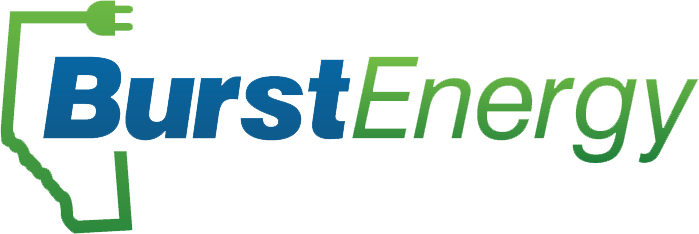Solar Energy Rates In Alberta: Opportunities And Considerations For Homeowners And Businesses
Thinking about going solar in Alberta but not sure how the rates, credits, and payback really work? You are not alone. Between fluctuating power prices, evolving incentives, and lots of conflicting advice, it can feel complicated. This guide walks you through the essentials so you can make a confident decision for your home or business.
How solar works on your Alberta bill
If you install a grid tied system, your distributor installs a bi directional meter. Every month, your bill shows two key numbers:
Energy you consume, the kWh you import from the grid when your home or business needs more power than your panels are producing.
Energy you export, the kWh you send back to the grid when your system produces more than you need.
You pay your energy rate on imports and you earn micro generation credits on exports. Credits are calculated using the exporter rate on your plan and the kWh recorded by the distributor meter. App estimates or inverter portals are helpful for monitoring, but they are not used for billing.
You will still see delivery, transmission, and other regulated charges on your bill. These charges apply to grid service and are separate from your energy rate. Solar helps reduce your energy charges by lowering imports and by earning credits. It does not remove all delivery fees.
What is the $5,000 solar grant in Alberta?
The most recognized $5,000 incentive is the federal Canada Greener Homes Grant program that offered up to $5,000 for eligible home retrofits, including solar PV. Intake for the federal grant has paused. Some municipalities and utilities in Alberta offer their own rebates or property tax financing. Availability changes through the year.
Action steps:
Check your municipal website for current residential and commercial solar programs.
Ask your installer about active provincial or local incentives at the time you quote.
Look for financing options that let you spread costs, including low interest loans that may replace a portion of incentive value if grants are not available.
Burst Energy also offers a solar friendly plan that pairs with micro generation. If you already have solar or plan to add it, ask our team how to align your energy rate with your production profile.
What is the solar electricity rate in Alberta?
There is no single solar electricity rate set by the province. Two prices matter:
Your import rate, what you pay for the electricity you still draw from the grid. With Burst Energy, you can choose fixed or variable plans. Fixed rates give you stability for budgeting. Variable rates track the market, which can be lower in some months and higher in others.
Your export credit rate, what you earn for surplus kWh your system sends to the grid. On Burst Energy’s solar program, credits are paid based on seasonally adjusted rates, with summer production and consumption up to 30 cents per kWh. Your monthly statement will show the exported kWh and the credit value.
Because Alberta has hourly market pricing, the value of your production can vary across the year. Summer months bring longer days and more output, which usually means higher credits. Winter still delivers benefits, even with shorter days, since your panels can offset costly peak hours when sun and load line up.
Can you sell solar power back to the grid in Alberta?
Yes. Under Alberta’s Micro generation Regulation, eligible systems can export to the grid and receive credits on their bill. Most residential systems qualify, and many commercial rooftops do too. You are not getting a case payment each month. Instead, your credits offset your energy charges. If your credits exceed your usage for the month, the balance rolls forward, subject to the terms of your retailer.
Good to know:
Your distributor’s meter reading is the official source for credits.
Credits apply to energy charges, not to all delivery line items.
Sizing your system to your annual load helps you maximize on site consumption, which delivers the most dependable savings.
Estimating savings and payback
Every site is different, but you can make a quick estimate with three inputs.
1. Annual consumption in kWh. Check your last 12 months of bills.
2. Expected annual solar production. A typical 7 to 10 kW residential system in Alberta might yield roughly 1,100 to 1,300 kWh per kW installed. Your installer will model this based on roof tilt, azimuth, and shading.
3. Your rates. Consider both your energy import rate and your expected export credit rate.
Savings come from:
Reduced imports, every kWh you produce and use on site avoids buying that kWh at your import rate.
Export credits, surplus production earns credits at your export rate.
Simple example, if you offset 6,000 kWh on site at 12 cents per kWh, that is $720 avoided. If you export 2,000 kWh and earn an average of 18 cents per kWh in credits, that is another $360 in value, total $1,080 before delivery charges. Actual results vary, but this shows how the two pieces work together.
Commercial systems scale the same logic. With larger daytime loads, businesses often self consume a bigger share of their production, which improves payback.
Common myths, cleared up
Solar eliminates your bill. It reduces your energy charges and can generate credits, but delivery charges remain because you still use the grid.
Credits are based on your app. Credits are based on the bi directional meter reads from your distributor.
Winter makes solar useless. Winter production is lower, not zero. Cold panels are efficient, and bright winter days can deliver solid output.
How Burst Energy supports solar customers
Solar friendly rates. Our solar program includes seasonal export credit structures that reflect Alberta’s production patterns. In summer, credits and consumption pricing recognize longer peak sun hours.
Flexible plans. You can choose fixed or variable import rates. Not sure which fits your profile? We will review your consumption and solar model with you.
Transparent billing. Your invoice shows imports, exports, and credits clearly. We issue invoices on the Tuesday after your monthly meter read and send an email notification the same night.
If you are comparing options across Alberta, look for clarity on both import rates and export credits. For straight electricity without solar, many customers also compare plans to find the cheapest electricity Edmonton or check Edmonton electricity rates as a baseline for savings once solar is added.
Tips to maximize your solar value
Shift flexible loads to sunny hours. Run dishwashers, EV charging, and laundry when your array is producing, so you use more of your own power.
Keep your array clean and shaded as little as possible. Annual maintenance checks and a quick wash during dusty seasons can help.
Right size your system. Aim to match annual production to your annual consumption. Oversizing can lead to credits that are less valuable than avoided imports.
Track performance. Use your inverter app for awareness and compare to your bill’s export numbers monthly to stay on top of trends.
The bottom line
Solar in Alberta can make financial sense for many homes and businesses. You can earn credits for exports, cut your imported kWh, and improve predictability by pairing your system with the right energy plan. The $5,000 federal grant that many people remember is currently paused, but local rebates and financing options come and go. Check what is available when you quote your project.
Burst Energy is local to Alberta and ready to help you line up a solar friendly plan with clear import rates and strong export credits. Have questions about micro generation credits, billing, or plan selection? Reach out to our Calgary based team and we will walk you through it, step by step
Search
Date
Recent Posts
More Posts Like This
Start saving today!
To find out how Burst Energy can improve your current electricity and natural gas services, give us a call today.




